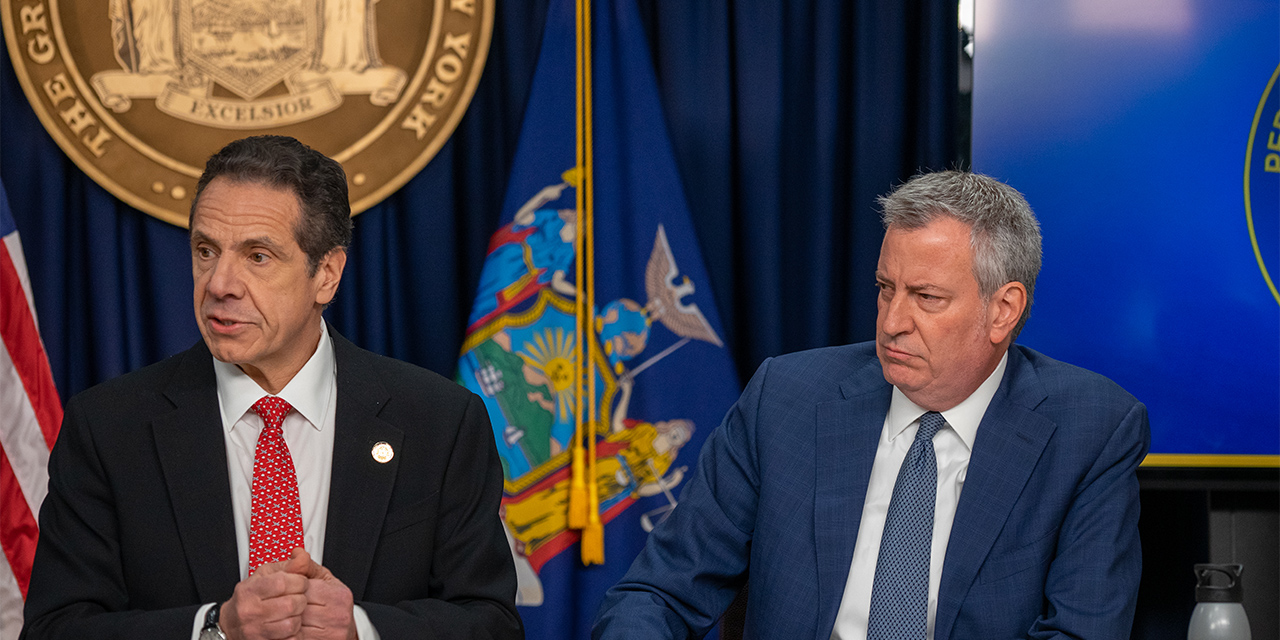Last week, in forcing the state-run Metropolitan Transportation Authority to end overnight service, Gov. Andrew Cuomo and Mayor Bill de Blasio sent the wrong signal to a city that needs, slowly and uncertainly, to recover: lights out. President Trump must keep them on — not least because Manhattan real estate depends on it.
The MTA doesn’t need to shutter its 472-stop system for four hours — inconveniencing 11,000 critical private-economy workers — to aid homeless people or deep-clean trains. It has rules against sleeping on trains, and the NYPD can better enforce them than it can secure 472 empty stations from potential terror. As for cleaning: Most trains are out of service at night. The MTA could set an hourly schedule for that.
The ominous truth was buried in the MTA’s statement: It will bring back 24/7 service “when customer demand” returns.
This is backward. Ridership is low now — a quarter of the 41,312 people who generally use transit during these hours. (Although the fact that 11,000 still need this transit shows remarkable resilience, which we should be building, not cutting off.)
But riders won’t come back unless they know there’s a train.
Consider the signal the state and city are sending to New York’s theater, nightlife and restaurant industry with this move. If you try to open up soon, your workers and customers will have no cheap, safe way to get home.
That isn’t just if they leave a bar at 1:30 a.m. Closures will compress ridership into the 11 p.m. and midnight hours, crowding less reliable trains when people need space. After a bad experience, people won’t take the train, further harming demand and pressuring the MTA for more cuts. If you close at 1, why not close at midnight?
This backwards philosophy applies to daytime hours. It may be years before white-collar workers commute to Manhattan in pre-corona numbers — because of job cuts and work-at-home policies.
If ridership is at 50 percent by fall — an optimistic projection — the MTA will find itself more abandoned by the political class.
The state and city are already washing their hands of transit. The Legislature wants the MTA to borrow $10 billion for operating expenses: more than half of any one year’s $17 billion budget; de Blasio has never cared about subways.
What happens in September, when the MTA, with fare revenues and tax subsidies crashed, has used up its bailout money, including the $4 billion already coming in from the feds? It will cut more service — and drive away more customers.
The MTA is in a chicken-and-egg situation that will get even more chicken-and-eggy: With bad or no service, there is less demand. Without demand, service deteriorates further. Like the 1970s, just on a faster timeline. And when the MTA should run even better and more frequent service to assuage an anxious public.
Failing spells the end of Manhattan and the core of a three-state economy. There is no other way to move 2.2 million people onto the dense island each day.
President Trump should understand: For the value of Manhattan real estate, important to him and his family and friends, nothing matters more than transit.
Trump could reopen a refurbished Grand Hyatt hotel in 1980 and see it thrive, because the state was about to pump billions of dollars into a then-failing transit system, including the four subway lines and commuter rail that sit under the hotel.
He could redevelop much of the Upper West Side, because of the 72nd Street subway station. The Trump International Hotel and Tower sits above another key transit hub, Columbus Circle.
His friend, Steve Ross, could build Hudson Yards, opening its luxury mall last year, because the city built a subway stop.
His daughter Ivanka and son-in-law, Jared Kushner: Good luck refilling buildings in and around Manhattan with tenants, if workers lose confidence in the train. Congress and the president need to do something they don’t usually do: subsidize transit operations indefinitely, so that the MTA can throw resources at subway and bus service to coax New Yorkers back.
Frequent service, masks, temperature checks — whatever it takes. Along with extraordinary operating aid, the feds should audit the MTA for savings. But now isn’t the time to hold up transit as some sort of parable or a petri dish.
Without transit underpinning the country’s richest city, the national tax base falters — and with it, the president’s family legacy.
This piece originally appeared at the New York Post
______________________
Nicole Gelinas is a senior fellow at the Manhattan Institute and contributing editor at City Journal. Follow her on Twitter here.
This piece originally appeared in New York Post
